- News
- Reviews
- Bikes
- Components
- Bar tape & grips
- Bottom brackets
- Brake & gear cables
- Brake & STI levers
- Brake pads & spares
- Brakes
- Cassettes & freewheels
- Chains
- Chainsets & chainrings
- Derailleurs - front
- Derailleurs - rear
- Forks
- Gear levers & shifters
- Groupsets
- Handlebars & extensions
- Headsets
- Hubs
- Inner tubes
- Pedals
- Quick releases & skewers
- Saddles
- Seatposts
- Stems
- Wheels
- Tyres
- Tubeless valves
- Accessories
- Accessories - misc
- Computer mounts
- Bags
- Bar ends
- Bike bags & cases
- Bottle cages
- Bottles
- Cameras
- Car racks
- Child seats
- Computers
- Glasses
- GPS units
- Helmets
- Lights - front
- Lights - rear
- Lights - sets
- Locks
- Mirrors
- Mudguards
- Racks
- Pumps & CO2 inflators
- Puncture kits
- Reflectives
- Smart watches
- Stands and racks
- Trailers
- Clothing
- Health, fitness and nutrition
- Tools and workshop
- Miscellaneous
- Buyers Guides
- Features
- Forum
- Recommends
- Podcast
review
£8,000.00
VERDICT:
Fast and peerless handling with all the benefits of hydraulic disc brakes, it sets the benchmark, but it's not cheap
Weight:
6,900g
Contact:
At road.cc every product is thoroughly tested for as long as it takes to get a proper insight into how well it works. Our reviewers are experienced cyclists that we trust to be objective. While we strive to ensure that opinions expressed are backed up by facts, reviews are by their nature an informed opinion, not a definitive verdict. We don't intentionally try to break anything (except locks) but we do try to look for weak points in any design. The overall score is not just an average of the other scores: it reflects both a product's function and value – with value determined by how a product compares with items of similar spec, quality, and price.
What the road.cc scores meanGood scores are more common than bad, because fortunately good products are more common than bad.
- Exceptional
- Excellent
- Very Good
- Good
- Quite good
- Average
- Not so good
- Poor
- Bad
- Appalling
The new Specialized S-Works Tarmac Disc offers flawless performance with crisp, balanced and stable handling, and the disc brakes are a game-changer on a race bike such as this, but there simply is no getting around the £8,000 price tag. Early adoption has never been cheap.

The Tarmac, Specialized's go-to race bike, has come a long way since it was first introduced in 2003. It's won some of the world's biggest races including the Tour de France, cobbled Classics such as Tour of Flanders, and helped amateur racers around the world to realise their ambitions and win local road races.
On the surface it looks as though little has changed from the old Tarmac SL4 aside from the addition of disc brakes, but in fact the whole frame has changed; it's been engineered from the outset with disc brakes in mind.

Disc brakes have been big news on endurance road bikes this past year, but there are virtually no race bikes with disc brakes. The Tarmac represents the first of a new breed of out-and-out race bikes with disc brakes. Okay, so you can't actually race this bike in any UCI-sanctioned race, but if they changed the rules tomorrow, this bike would be ready to race.
Find the Specialized S-Works Tarmac Disc online
Find a Specialized dealer
Ride and performance
Specialized have nailed it with the new Tarmac. On the road, the Tarmac is a stunning bike, offering a level of performance that not only benefits from the disc brakes, but a host of other changes underneath the paint job, all combining to create a truly remarkable road bike.

Aside from the small matter of the UCI not (yet) allowing disc brakes in the professional peloton, the Tarmac Disc is to all intents and purposes, ready to race. It has the exact same geometry as the non-disc Tarmac and the changes to accommodate the disc brakes has resulted in a mere 80g weight increase in the frame, the whole bike in this range-topping build is 6.9kg (15.21lb), about 350g heavier than a non-disc Tarmac with mechanical Dura-Ace.
The disc brakes are a revelation. True enough I've been won over by disc brakes on a host of endurance bikes such as the Cannondale Synapse and Giant Defy this year, but they're rangey and relaxed long distance cruisers. The Tarmac is a thoroughbred race bike and that shows the moment you hit the road. It's an eye-opening thrill a minute. It's fast, really fast, with a fantastically enthusiuastic response to any pedalling input.

The frame is really stiff. You can really detect it when pedalling; there is virtually no deflection in the bottom bracket. This makes it a great climber. It's super responsive on the steepest hills and, even though I've ridden lighter bikes this year, the Tarmac was one of the quickest up my local hills.
The geometry, short in the wheelbase and low in the head tube, puts you in a really good position and means the Tarmac is very responsive to any sort of steering input. There's no lethargy in the way it cuts and turns through corners, darts across the road with pinpoint direction changes. The feedback through the frame paints a really vivid image of the road surface passing beneath you, allowing you to exploit the maximum available traction from the S-Works tyres.
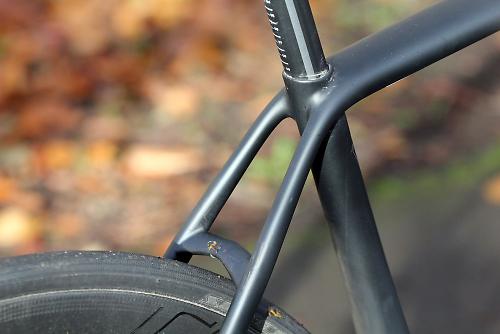
The descents are where the Tarmac really showcases its delightful, flawless handling. It's rock solid, even on rougher roads, and you can line up for apexes with the sort of accuracy you demand from a race bike. There's no lag, no uncertainty, no hesitation. It's in tune with everything you demand from it. Accelerating, sprinting, cornering, braking, descending, climbing, it does all of that so well you won't want to ride another bike ever again.
There's one small caveat to all this performance: it's not the smoothest ride. It's noticeably smoother than the old SL4, thanks to the changes to the seatpost and carbon fibre layup, but it does relay quite a lot of the road surface texture through the frame and fork. It never becomes jarring or uncomfortable, but it certainly doesn't isolate you from the road.
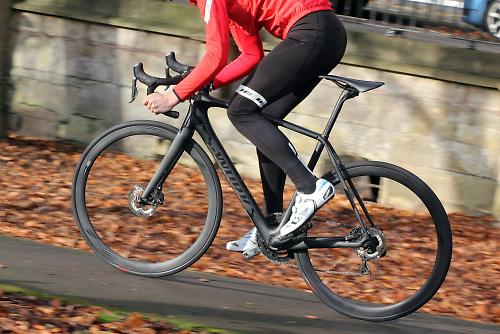
The disc brake advantage
Yes, there really is an advantage. I've been won over by disc brakes on road bikes this past 12 months, but they've all been endurance bikes with longer wheelbases, taller head tubes, and comfort features. To ride a proper race bike with disc brakes has been an interesting experience. In every situation the disc brakes were nothing short of wonderful. Dry or wet, slow or fast, the lever feel and power offered more control, and confidence, in scrubbing off speed coming into corners.

I was often asked about the limit of traction from the 24mm S-Works tyres; there's a fear that the power of disc brakes will result in locked wheels and skidding. But not once did I find any more concerns with tyre traction than on a non-disc bike. Tyre grip is a limiting factor for all road bikes, regardless of the braking system. Even a caliper rim brake will lock the rear wheel if you pull it hard enough. What the disc brakes offer is much more control and easy application of that power right up to the limit of the tyres' traction, with a much more usable power curve than you might imagine. Think how good the brakes in your car are. These are just like that.
One finger braking is all that is required all of the time, whether you're checking speed through a high speed corner, or dumping a load of speed for a tight corner, T-junction at the bottom of a fast descent, or traffic lights. In my hands, the Tarmac Disc is without doubt quicker over a challenging circuit full of hills, descents and corners.
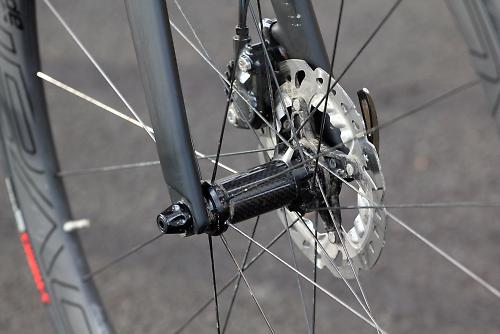
Downsides? Sometimes riding in the rain, splashing through puddles, does result in a spot of tinkling and squealing when you first apply the brakes, but it's short lived and certainly doesn't happen all of the time. When you actually come to use the brakes in such conditions there is no noise. Compared to the awful graunching soundtrack of a rubber brake block flaying wet aluminium rim in horrid conditions, it's a satisfyingly quiet experience.
I noticed no disc brake rub from the front, as I did with the Bianchi Infinito CV. That's a good thing because Specialized, as the majority of manufacturers offering disc-equipped road bikes are doing, have gone with traditional quick release skewers and not a thru-axle system. With my mountain bike experience I'm a fan of the thru-axle solidness and security, but the Tarmac gave me no reason to think there was any need for them on this bike.
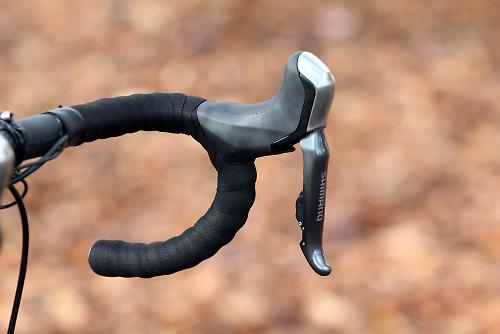
Frame
The Tarmac frame is made from FACT 11r carbon fibre and visually looks similar to the old SL4, but there are a few key differences. The seat clamp is now integrated into the top tube, accessed by a small hole in the side of the top tube. This allows more seatpost to be extended out of the seat tube and results in a small, but measurable, increase in deflection. It does add up to a slightly smoother ride.
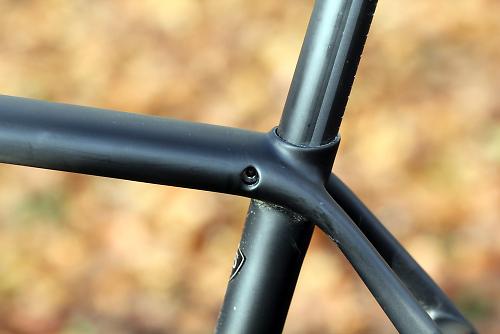
The big news with the new Tarmac is Specialized's Rider-First Engineered approach to developing each of the six frame sizes independently, rather than sizing up and down from the 56cm. They've essentially designed six different frames, with specific layup and tube profiles, with the aim of optimising the handling and performance for each frame size. It's less noticeable on the 56cm - the bike feels very similar to the old SL4 - but on the smaller and larger frame sizes the difference is likely to be more pronounced.
Specialized have done an impressive job of smoothly integrating the disc brakes and they've kept the weight increase to a minimum. The disc frame has a claimed 80g increase over the standard Tarmac, with most of that weight in the modified rear stays and the new fork. The hydraulic hoses are routed inside the fork and the frame, as is the wiring for the Shimano Di2 shifting. It's a cleaner and better looking bike than the non-disc version, but that's a subjective thing of course.

Compared to the previous SL4, the differences I detected with the new Tarmac were small, but noticeable. It clearly feels like the old model but it's a bit sharper, a bit more focused when you're really pushing the pace, yet it's a little smoother and more comfortable too, not that the old model was particularly uncomfortable. There's less chatter on rougher roads, less vibration feeding back through the contact points. Far from the smoothest bike but in the race bike category it's one of the smoother and more supple over a variety of road surfaces.
Build kit - no expense spared
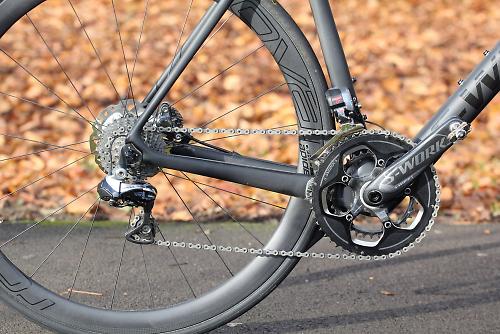
The Tarmac Disc range comprises three models for 2015, all with hydraulic disc brakes. The £4,500 Tarmac Pro Disc Race gets the ball rolling, above it is the £5,500 Tarmac Pro Disc Race Di2, and at the top is the £8,000 S-Works Tarmac Disc we have here. Specialized clearly don't expect to sell many, it's a halo product, a demonstration of all the best off-the-shelf kit currently available, and it's a pretty stunning looking bike as a result.
With an £8,000 budget it's no surprise the build kit on this S-Works model is all top stuff. Firstly, there's the Shimano Dura-Ace Di2 groupset with a Specialized S-Works carbon fibre chainset rolling on CeramicSpeed bearings and fitted with 52/36 chainrings. However, I didn't feel the Specialized chainrings offered the same high quality of shifting performance as a set of Dura-Ace chainrings.
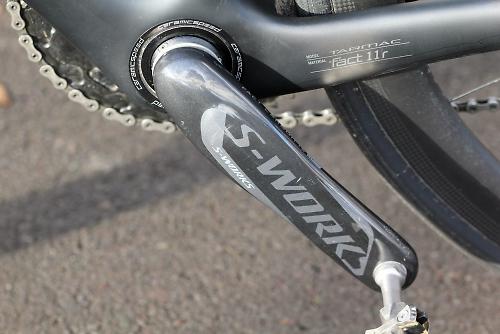
Otherwise there's nothing much to say about the groupset that hasn't been said before. It's excellent, it is the benchmark. The battery lasts for ages. The shape of the non-series R785 brake levers is admirable, considering there's a hydraulic reservoir tucked away inside, you can easily wrap your fingers around the body no problems. Specialized have stuck with Shimano's recommended 140mm rotors front and rear.
Specialized have reached into their own parts bin for the 27.2mm carbon fibre seatpost and Body Geometry Toupe Pro saddle with carbon rails, which all helps to save weight. The Toupe saddle has been around for many years and despite its slender profile, is a comfortable saddle for long rides. The 20mm offset clamp on the seatpost provides a wide range of fit adjustment.

Up front is an S-Works SL Carbon handlebar with a comfortable shallow 125mm drop and 75mm reach. Those numbers make the drops easily accessible for even the least flexible cyclist. An S-Works SL aluminium stem is light on the scales but I had to swap it out for a longer (12cm) stem to get my preferred fit. Very tactile and hard-wearing Specialized Classic gel bar tape is wrapped around the handlebars.
Lastly, the wheels. Roval is Specialized's own wheel brand and the CLX 40 SCS Disc wheels are fitted with CeramicSpeed bearings and feature a 40mm deep-section rim. The hub shells are compact units and finished with a carbon fibre centre section to save even more weight.
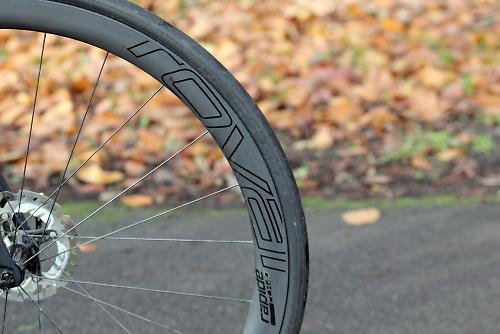
The wheels are everything you want from a deep-section wheel. They're fast, stiff under sprinting with no side-to-side flex evident, whether pushing hard for the top of a hill or finish line, and they provide good rolling speed at high cruising speeds. That's a good thing too, because you're kind of locked into these wheels with this bike.
Why? Well, in order to keep the short 405mm chainstays of the regular Tarmac required Specialized to get inventive. You see, Shimano recommends a minimum chainstay length of 415mm with disc brakes, in order to avoid any chainline issues. Not a problem on an endurance bike which naturally has longer chainstays.
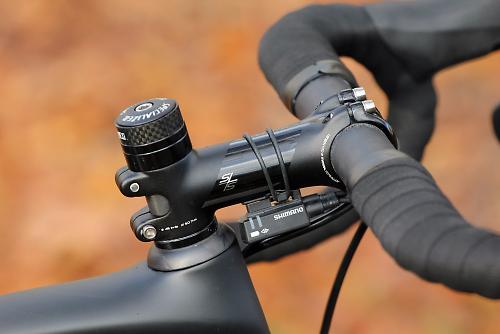
So, to keep the chainstays short, but avoid fouling the chainline (the chain rubbing on the front derailleur cage in certain gear combinations) Specialized modified the rear hub to effectively place the cassette further inboard. The cassette sits where it would if it were on a 130m hub, not the 135mm on this disc bike, and a specific mech hanger and dropout brings the rear mech further inboard. The result is a sweet chainline in all the gear combinations I tried, even big-to-big and little-to-little.
It's a measure that limits wheel choice, but Specialized says you can change the mech hanger and dropout to a regular one and fit another disc wheel, but they can't guarantee perfect chainline. I could find no reason to want to change the wheels though. Even training rides in the foul winter conditions poses no problems, because you've got the disc brakes you don't have to pack away your carbon fibre clincher wheels for a set of aluminium rims for better braking in the rain and mud.
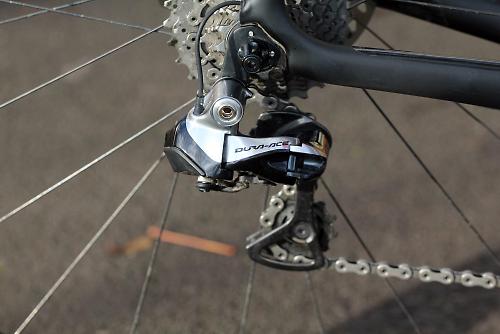
With such high-end kit, the S-Works Tarmac Disc is light. At 6.9kg (15.21lb) it's the lightest disc-equipped road bike we've ever tested. To put that in perspective, it's about 350g heavier than the equivalent spec non-disc Tarmac. This is really a first generation disc race bike too, so that weight will come down, as will the price, within a few years. Being an early adopter is never cheap.
Conclusion
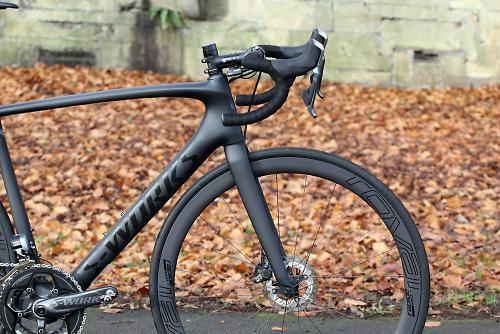
Yes, it's a race bike that can't technically be used in a race. But here's the thing: a large number of the race bikes bought never actually see a race circuit, and if that's you, and you want a proper race bike for the handling and performance the Tarmac offers, but like the appeal of disc brakes for the all-round benefits, then the S-Works Tarmac Disc won't disappoint. If you are racing, then you can just look at the non-disc S-Works Tarmac instead which should offer the same performance but a little less weight, a few more pounds in your pocket and be race legal.
If you want the best race bike with disc brakes currently available, the S-Works Tarmac Disc sets the benchmark, and it sets it high.
Verdict
Fast and peerless handling with all the benefits of hydraulic disc brakes, it sets the benchmark, but it's not cheap
road.cc test report
Make and model: Specialized S-Works Tarmac Disc
Size tested: 56cm, black
Tell us what the product is for, and who it's aimed at. What do the manufacturers say about it? How does that compare to your own feelings about it?
The new S-Works Tarmac Disc is Rider-First Engineered™ to provide every size frame with the hill destroying stiffness and legendary descending prowess the Tarmac is known for. It's a no compromise race-bred machine and now with full hydraulic Shimano disc brakes, slowing down has never been easier.
Tell us some more about the technical aspects of the product?
S-Works FACT 11r carbon Rider-First Engineered™ frameset for the best fit and ultimate speed
Roval Rapide CLX 40 SCS Disc wheels w/ CeramicSpeed bearings for speed and stiffness
S-Works Turbo, 700x24c tyres w/ Gripton blend extreme grip w/ high speed
S-Works FACT carbon OSBB crankset is the perfect blend of light weight and stiffness
Shimano 785 hydraulic disc brakes for incredible modulation and stopping power
Shimano Dura-Ace Di2, 11-speed derailleur for precise shifting no matter the conditions
Specialized Body Geometry Toupé Pro saddle w/ carbon rails for performance and comfort
Rate the product for quality of construction:
9/10
Rate the product for performance:
10/10
Rate the product for durability:
9/10
Rate the product for weight, if applicable:
8/10
Rate the product for comfort, if applicable:
8/10
Rate the product for value:
8/10
Yes it's not cheap, but being an early adopter never is. This bike is packed with the most high-end kit, so I'd be take a look at the cheaper Tarmac Disc models still with hydraulic disc brakes instead.
Tell us how the product performed overall when used for its designed purpose
Flawless performance, incredible speed and handling, sublime in all situations, and all the benefits of disc brakes '' and it really does benefit from the disc brakes.
Tell us what you particularly liked about the product
Just incredible handling, lovely to ride, oh so fast up and down and on the flat, and looks stunning.
Tell us what you particularly disliked about the product
It's a race bike and perhaps the most noticeable reminder is the sometimes choppy ride, but generally it's a very smooth bike considering how sharply tuned and focused it is for the pursuit of going absolutely flat-out fast.
Did you enjoy using the product? Yes.
Would you consider buying the product? If I had the money, yes I would.
Would you recommend the product to a friend? If they had the money, certainly.
Anything further to say about the product in conclusion?
Since riding this bike, I've started doing the lottery, because I really don't want to give it back.
About the tester
Age: 31 Height: 180 Weight: 67
I usually ride: My best bike is:
I've been riding for: 10-20 years I ride: Every day I would class myself as: Expert
I regularly do the following types of riding: road racing, time trialling, cyclo cross, commuting, touring, mtb,
David worked on the road.cc tech team from 2012-2020. Previously he was editor of Bikemagic.com and before that staff writer at RCUK. He's a seasoned cyclist of all disciplines, from road to mountain biking, touring to cyclo-cross, he only wishes he had time to ride them all. He's mildly competitive, though he'll never admit it, and is a frequent road racer but is too lazy to do really well. He currently resides in the Cotswolds, and you can now find him over on his own YouTube channel David Arthur - Just Ride Bikes.
Latest Comments
- Paul J 1 sec ago
Squadrats sounds like a complete rip-off of Ride Every Tile.
- Secret_squirrel 10 min 8 sec ago
£7,636! Lovely as this holiday sounds - I cant see the missus approving, and even if she did thats several (well 2 these days) new bikes and a...
- ROOTminus1 20 min 10 sec ago
A paragon of virtue when compared to the likes of FIFA and the FIA. But that's like comparing genital herpes to necrotising fascitis, there are no...
- chrisonabike 38 min 29 sec ago
Hmm... I think that needs tweaking. People do get passionate about keeping local things, but:...
- brooksby 1 hour 2 min ago
There are comments on the Bristol Post about this along the lines of how pedestrians only ever have to wait a few seconds so why change anything....
- parcours 1 hour 22 min ago
Anything is possible with a custom build. We do a reasonable number of track builds each year & can offer it on any road model in the line-up
- Condor Andy 1 hour 29 min ago
Velogames' Spring Classics comp is open and is more in tune with the road.cc game. You have 24 transfers to use between MSR and LBL. There are also...
- NPlus1Bikelights 2 hours 2 min ago
Mildly interested. My knees don't like the rotations needed for unclipping, I use well made Japanse MKS half clips on a commuter bike. They do...
- Miller 2 hours 26 min ago
Sounds great but worth noting that the Osmo Action 4 can be had for £189 at the moment.
- hawkinspeter 2 hours 27 min ago
Campaigners condemn Liveable Neighbourhood vandalism:...

































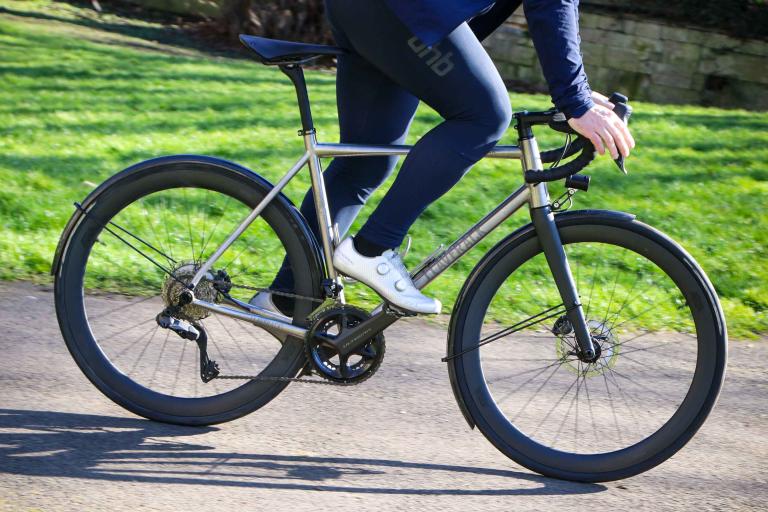


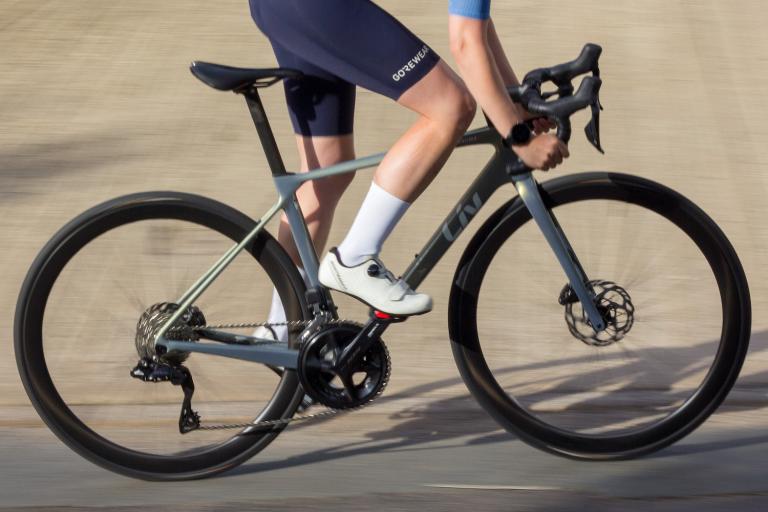
Add new comment
7 comments
I have had two S-Works Roubaixs; both of which cracked throught the seat tube. The first was bought in 2015 and developed a 2.5cm crack underneath the deraileur mount. It meant the bike would not stay tuned and it took ages to find. The frame was replaced under warranty. The second was a 2016 model and it cracked 3/4 way through the seat tube while riding; thankfully just above the seat post so it held together (avoiding a nasty hospital trip). Specilaised agreed to replace the second frame but I wasn't going for a third time unlikely.
The Roval Rapide CLX 40 wheels are another problem. Just over 12 months old and they developed a loud creaking noise that has been isolated to the rear spokes grinding together. The noise started only when under load climbing but after a short time occured during normal riding. It is so loud as to be distracting and dangerous. My dealer has had them back twice to re-tension and lubricate, but the noise just comes back. Specilaised won't warrant because they are over 12 months old - even though their web material provides a 3 year warranty.
I initially read that as £800. Great, I thought. Then, oh.
Wicked bike.
I've just sold my SL4 because I've been lent a Giant Defy Advanced Pro for the season and was blown away by the experience of riding hydraulic discs on a road bike. Going back to my caliper brake SL4 just felt primitive, and regressive. So I sold it...
Tarmac disc is very interesting because I've ridden the new 'tarmac' caliper brake bike already and can only see hydraulic discs brakes adding to the experience.
The Giant I am riding is an amazing bit of kit, certainly not a baggy endurance bike by any means, but that Tarmac disc. Hmmmmm
Statement of the year: 'It's not cheap'
Personally when I read the review I thought, dam that's not bad for 8000 of the queens pounds. then I woke up and thought that looks like a rip off of the Colnago CX zero Nero, even stem looks very very similar in design to the Superleggera stem.
then I woke up and thought that looks like a rip off of the Colnago CX zero Nero, even stem looks very very similar in design to the Superleggera stem.
6.9kg for 8 grand is a bit pants... Trek Emonda anyone...
Still don't like them on top end road bikes, discs are ugly IMO, however they are here to stay, and they work well, it's as easy as that. I have hydraulics on my commuter and MTB... Not ready to have them on machine #1 yet though.
Surely Disc brakes are better than rim brakes. But what about cost benefit considerations? And what about service considerations?
By the way, I think the tested disc brake vastly failed a test in the German bike mag "Tour".
Any moderately competent home mechanic can service a hydraulic disc brake with a simple set of tools.
As for cost/benefit... bit of a moot point on a£8k bike
Re: the chainline, is a 2.5 mm offset at the back not something that you could adjust for in the front mech design or setting? It must mean less than 1mm deflection at the point the chain would contact the mech or chainring.